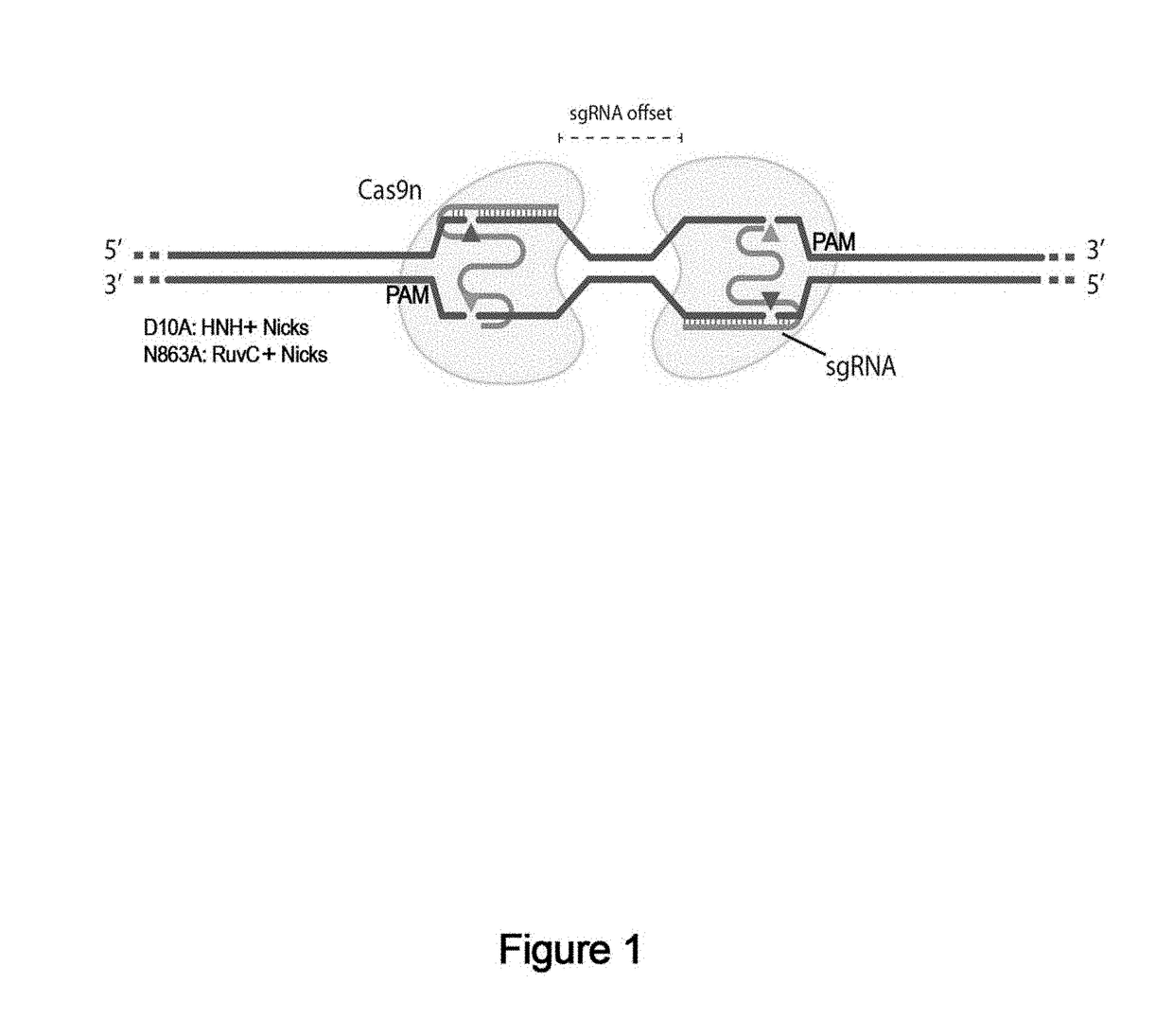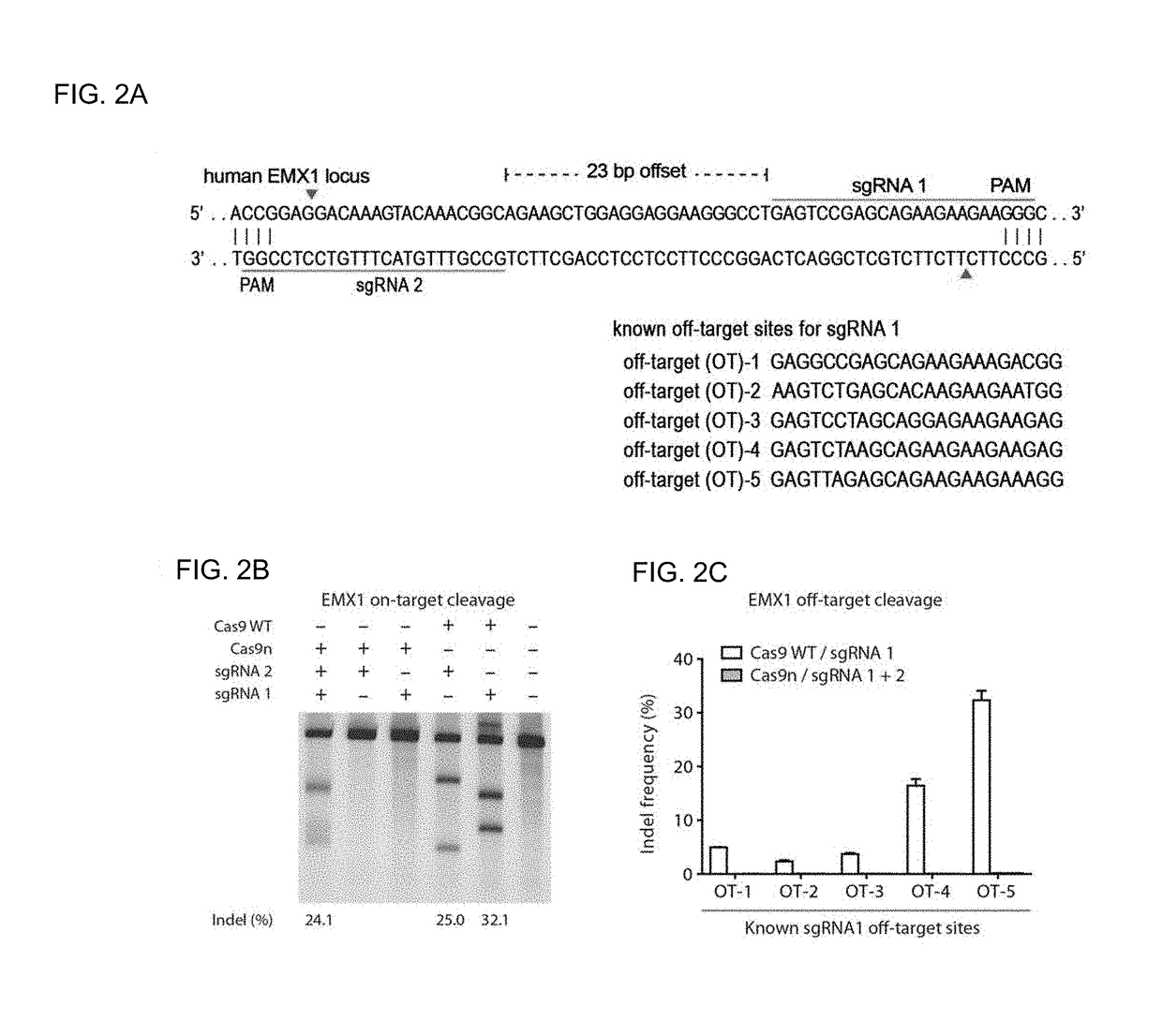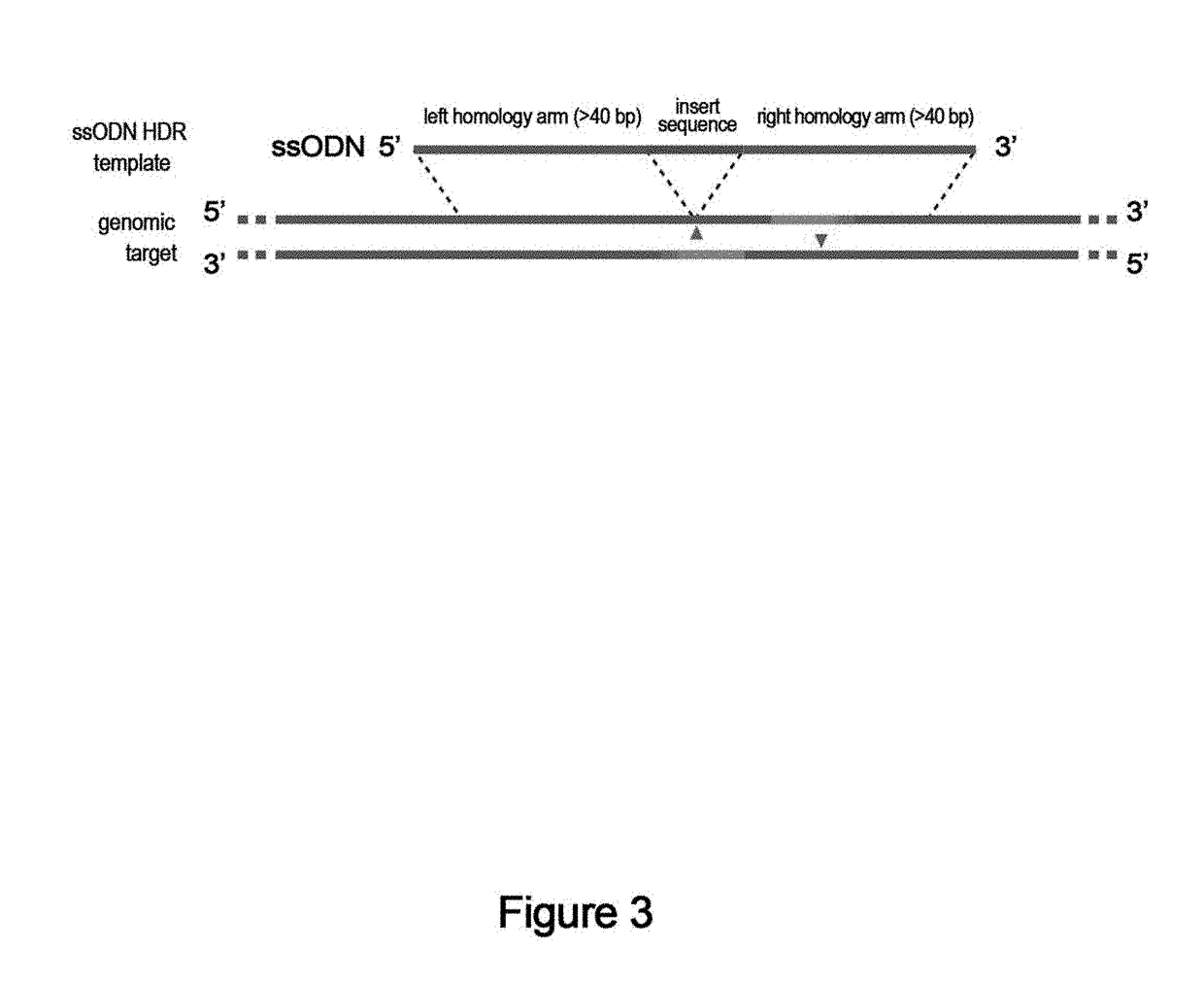Genome editing using cas9 nickases
a technology of cas9 and nickases, applied in the field of delivery, engineering and optimization, can solve the problems of low efficiency, simple and fast system design, and process typically only in dividing cells, and achieve high specific genome engineering, low efficiency, and stimulate hdr
- Summary
- Abstract
- Description
- Claims
- Application Information
AI Technical Summary
Benefits of technology
Problems solved by technology
Method used
Image
Examples
example 1
lection
[0758]SpCas9 targets are any 20-bp DNA sequence followed at the 3′ end by 5′-NGG-3′. The CRISPR DESIGN website of the Zhang Lab, MIT, provides an online tool (http: / / tools.genome-engineering.org) accepts a region of interest as input and provides as a output a list of all potential sgRNA target sites within that region. Each sgRNA target site is then associated with a list of predicted genomic off-targets.
[0759]The tool also generates double-nicking sgRNA pairs automatically. The most important consideration for double-nicking sgRNA design is the spacing between the two targets (Ran et al., 2013). If the “offset” between two guides is defined as the distance between the PAM-distal (5′) ends of an sgRNA pair, an offset of −4 to 20 bp is ideal, though offsets as large as 100 bp can induce DSB-mediated indels. sgRNA pairs for double nicking target opposite DNA strands.
example 2
gRNA Construction
[0760]sgRNA expression vectors are constructed by cloning 20-bp target sequences into a plasmid backbone encoding a human U6 promoter-driven sgRNA expression cassette and a CBh-driven Cas9-D10A (pSpCas9n(BB), Addgene #48873). The N863A nickase is exchanged with D10A in all cases. It is recommended to prepare this plasmid as an endotoxin-free maxiprep. The generalized oligos used to clone a new target into pSpCas9n(BB) are described in Table 1 and are purchased from Integrated DNA Technologies (IDT). Note that the PAM sequence required for target recognition by Cas9 is not present as part of the sgRNA itself.
TABLE 1PrimerSequence (5′ to 3′)DescriptionsgRNA-fwdCACCGNNNNNNNNNNNNNNNNNNNN Sticky overhang plus specific 20-bp(SEQ ID NO: 108)genomic target to be cloned intosgRNA backbonessgRNA-revAAACNNNNNNNNNNNNNNNNNNNNC Complimentary annealing oligo for(SEQ ID NO: 109)cloning new target into sgRNAbackbones.[0761]1. A target sequence is cloned into an sgRNA backbone vector...
example 3
n of sgRNAs in Cell Lines
[0770]This example describes the functional validation of sgRNAs in HEK293FT cells; culture and transfection conditions may vary for other cell types.[0771]1. HEK293FT cells (Life Technologies R700-07) are maintained in sterile D10 media (DMEM, high glucose (Life Technologies 10313-039) supplemented with 10% vol / vol fetal bovine serum (Seradigm 1500-500) and 10 mM HEPES (Life Technologies 15630-080)). For optimal health, cells are passaged every day at a ratio of 1:2-2.5 and kept under 80% confluence.[0772]2. Cells are plated for transfection. 120,000 cells are seeded per well of a 24-well tissue-culture treated plate in a total volume of 500 μL. Cultures and transfections are proportionally scaled up or down for different formats based on growth surface area. For many adherent cell types, poly-D-lysine coated plastic may improve adherence and viability.[0773]3. After 18 hours the plates are checked to determine the confluence of the cells—generally 90% is i...
PUM
| Property | Measurement | Unit |
|---|---|---|
| Fraction | aaaaa | aaaaa |
| Length | aaaaa | aaaaa |
| Composition | aaaaa | aaaaa |
Abstract
Description
Claims
Application Information
 Login to View More
Login to View More - R&D
- Intellectual Property
- Life Sciences
- Materials
- Tech Scout
- Unparalleled Data Quality
- Higher Quality Content
- 60% Fewer Hallucinations
Browse by: Latest US Patents, China's latest patents, Technical Efficacy Thesaurus, Application Domain, Technology Topic, Popular Technical Reports.
© 2025 PatSnap. All rights reserved.Legal|Privacy policy|Modern Slavery Act Transparency Statement|Sitemap|About US| Contact US: help@patsnap.com



